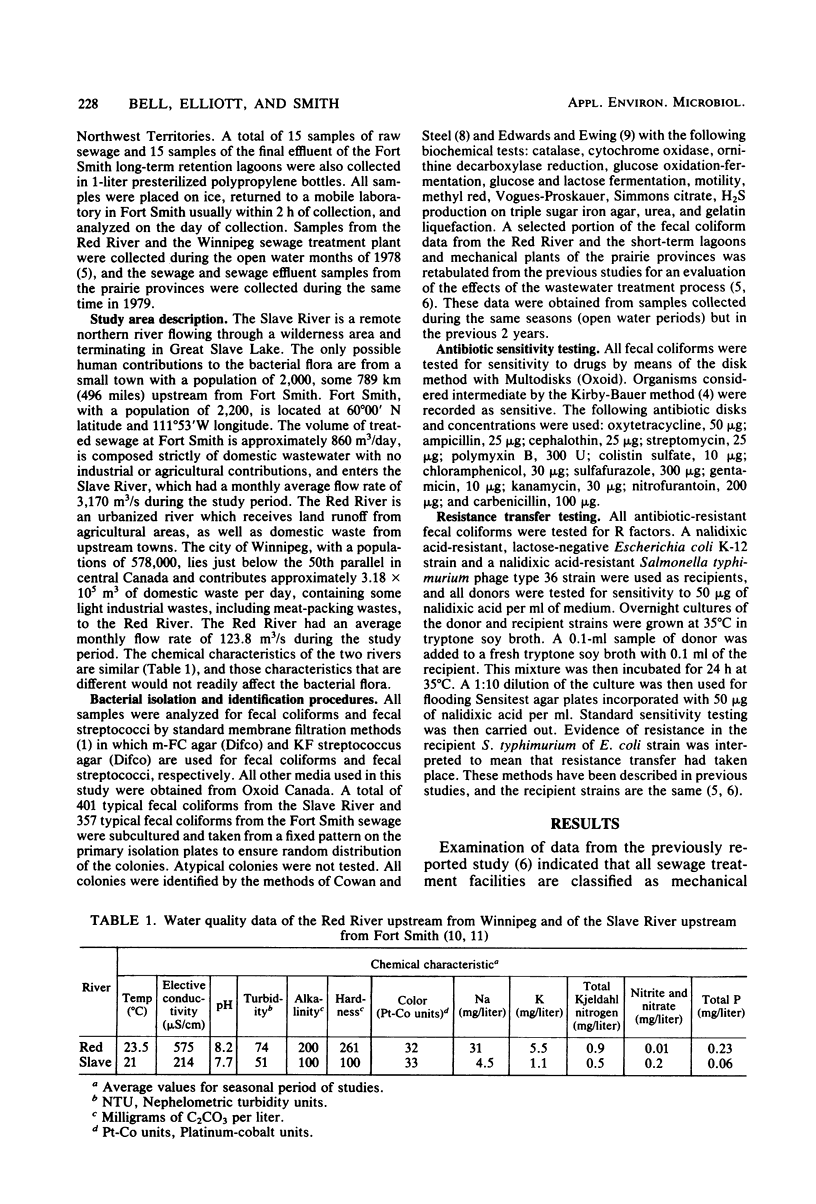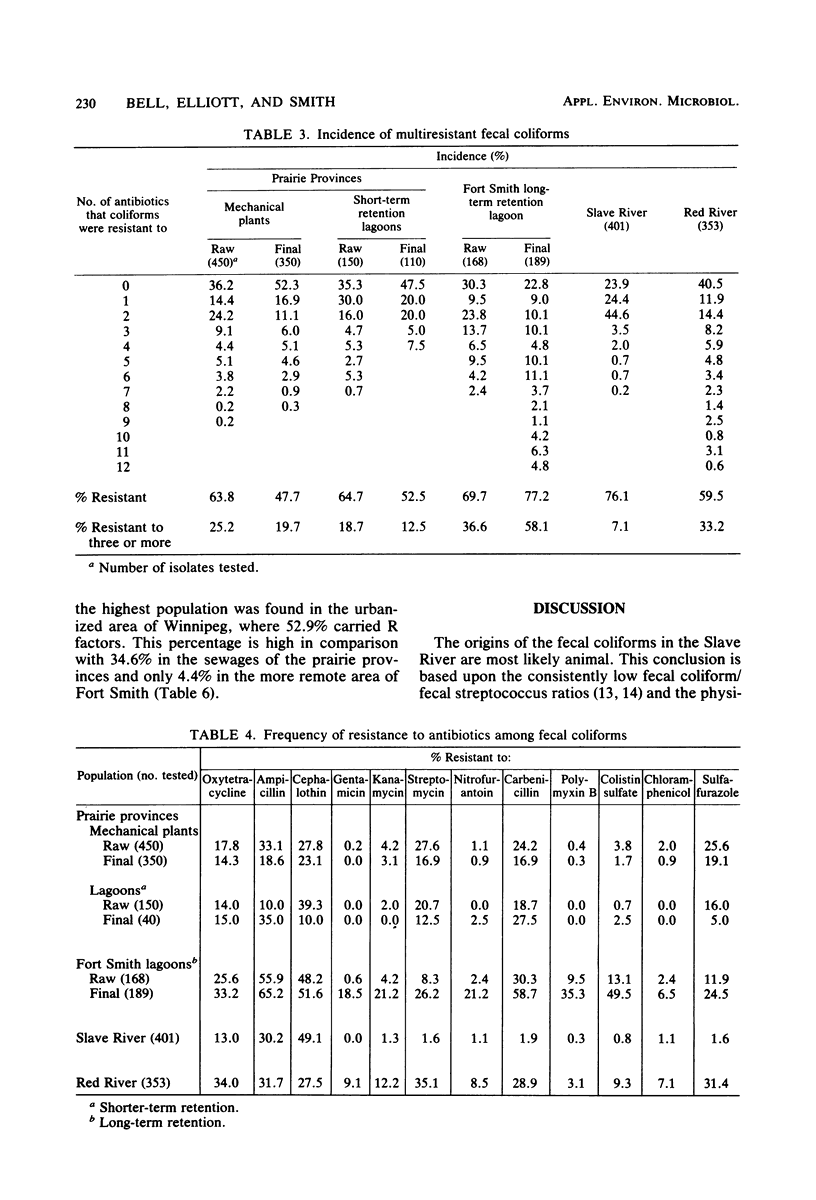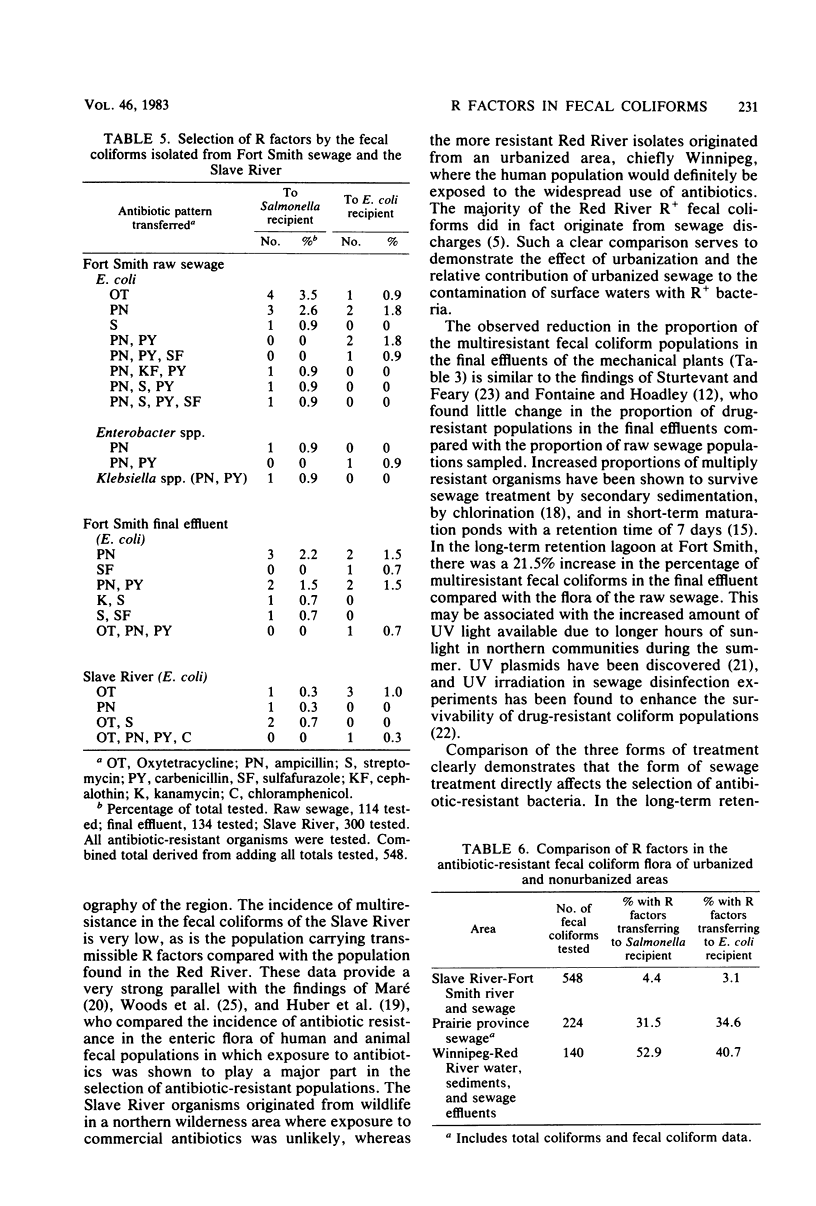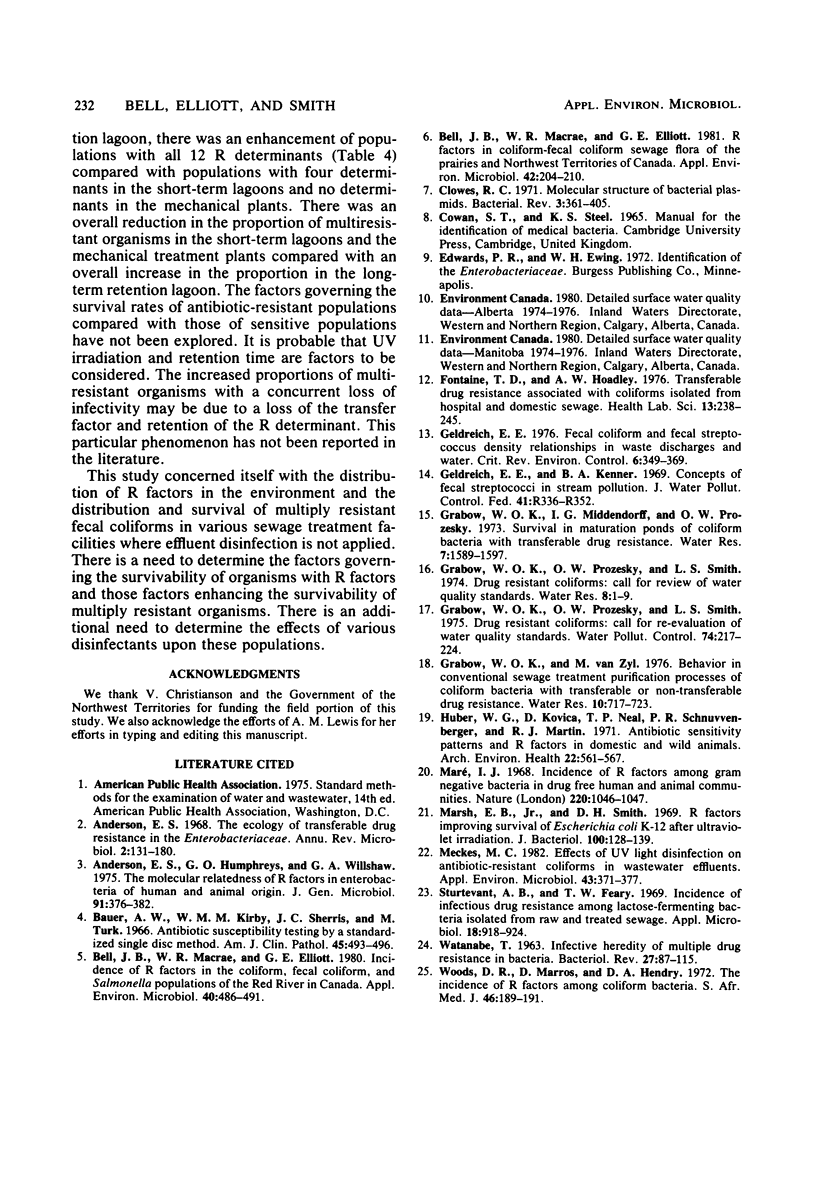Abstract
The fecal coliform populations found in the raw sewages and final sewage effluents of mechanical treatment plants, a long-term retention lagoon, shorter-term retention lagoons, a remote northern Canada river, and a heavily urbanized prairie river were examined for antibiotic resistance and the possession of R factors. It was determined that there was a decrease in the percentage of multiresistant fecal coliform populations in the mechanical sewage treatment plants and shorter-term retention lagoons; however, there was an increase in populations from the long-term retention lagoon. The percentage of the populations possessing transmissible R factors was constant in the mechanical treatment and shorter-term retention facilities; however, the ability to transmit was lost in 50% of the infective population of the long-term retention facility. A striking contrast was found between the populations of the remote northern Slave River and those of the urbanized Red River. Of the fecal coliforms in the Slave River, 7.1% were multiresistant, and only 0.79% possessed transmissible R factors. The Red River fecal coliform populations were 52.9% multiresistant, and 18.77% of the total population possessed transmissible R factors. The influence of urbanization and the type of sewage treatment have been shown to affect the selection and survival of multiresistant fecal coliforms and R+ fecal coliforms. Determination of other factors influencing the development and the survival of these populations is needed for rational wastewater management and water quality consideration.
Full text
PDF





Selected References
These references are in PubMed. This may not be the complete list of references from this article.
- Anderson E. S., Humphreys G. O., Willshaw G. A. The molecular relatedness of R factors in enterobacteria of human and animal origin. J Gen Microbiol. 1975 Dec;91(2):376–382. doi: 10.1099/00221287-91-2-376. [DOI] [PubMed] [Google Scholar]
- Anderson E. S. The ecology of transferable drug resistance in the enterobacteria. Annu Rev Microbiol. 1968;22:131–180. doi: 10.1146/annurev.mi.22.100168.001023. [DOI] [PubMed] [Google Scholar]
- Bauer A. W., Kirby W. M., Sherris J. C., Turck M. Antibiotic susceptibility testing by a standardized single disk method. Am J Clin Pathol. 1966 Apr;45(4):493–496. [PubMed] [Google Scholar]
- Bell J. B., Macrae W. R., Elliott G. E. Incidence of R factors in coliform, fecal coliform, and Salmonella populations of the Red River in Canada. Appl Environ Microbiol. 1980 Sep;40(3):486–491. doi: 10.1128/aem.40.3.486-491.1980. [DOI] [PMC free article] [PubMed] [Google Scholar]
- Bell J. B., Macrae W. R., Elliott G. E. R factors in coliform-fecal coliform sewage flora of the prairies and Northwest Territories of Canada. Appl Environ Microbiol. 1981 Aug;42(2):204–210. doi: 10.1128/aem.42.2.204-210.1981. [DOI] [PMC free article] [PubMed] [Google Scholar]
- Fontaine T. D., 3rd, Hoadley A. W. Transferable drug resistance associated with coliforms isolated from hospital and domestic sewage. Health Lab Sci. 1976 Oct;13(4):238–245. [PubMed] [Google Scholar]
- Geldreich E. E., Kenner B. A. Concepts of fecal streptococci in stream pollution. J Water Pollut Control Fed. 1969 Aug;41(8 Suppl):R336+–R336+. [PubMed] [Google Scholar]
- Huber W. G., Korica D., Neal T. P., Schnurrenberger P. R., Martin R. J. Antibiotic sensitivity patterns and R factors in domestic and wild animals. Arch Environ Health. 1971 May;22(5):561–567. doi: 10.1080/00039896.1971.10665902. [DOI] [PubMed] [Google Scholar]
- Marsh E. B., Jr, Smith D. H. R factors improving survival of Escherichia coli K-12 after ultraviolet irradiation. J Bacteriol. 1969 Oct;100(1):128–139. doi: 10.1128/jb.100.1.128-139.1969. [DOI] [PMC free article] [PubMed] [Google Scholar]
- Meckes M. C. Effect of UV light disinfection on antibiotic-resistant coliforms in wastewater effluents. Appl Environ Microbiol. 1982 Feb;43(2):371–377. doi: 10.1128/aem.43.2.371-377.1982. [DOI] [PMC free article] [PubMed] [Google Scholar]
- Sturtevant A. B., Jr, Feary T. W. Incidence of infectious drug resistance among lactose-fermenting bacteria isolated from raw and treated sewage. Appl Microbiol. 1969 Nov;18(5):918–924. doi: 10.1128/am.18.5.918-924.1969. [DOI] [PMC free article] [PubMed] [Google Scholar]
- WATANABE T. Infective heredity of multiple drug resistance in bacteria. Bacteriol Rev. 1963 Mar;27:87–115. doi: 10.1128/br.27.1.87-115.1963. [DOI] [PMC free article] [PubMed] [Google Scholar]
- Woods D. R., Marcos D., Hendry D. A. The incidence of R factors among coliform bacteria. S Afr Med J. 1972 Feb 19;46(8):189–191. [PubMed] [Google Scholar]


